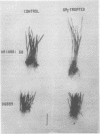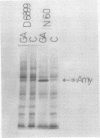Abstract
The effects of gibberellin in two wheat varieties, Nainari 60 and D6899, have been studied. D6899 is a dwarf wheat having a single locus mutation, the Rht 3 gene (“Tom Thumb” gene), which is located on chromosome 4A. When compared with the standard height wheat variety, Nainari 60, D6899 does not have a slowdown in cellular metabolism such as respiration rate, protein content, rate of protein synthesis, and uptake of amino acids. The content of ATP is even higher in D6899. However, all of the gibberellin-mediated physiological processes that we have studied, including leaf elongation, synthesis and release of hydrolytic enzymes, and secretion of phosphate ions and reducing sugars in aleurone layers, are retarded in D6899. D6899 and Nainari 60 have essentially the same uptake and metabolism of gibberellin and their levels of endogenous inhibitors such as abscisic acid do not differ drastically. The dosage-response curve of the gibberellin-mediated α-amylase production indicates that a rate-limiting step, which is common to many of the diverse gibberellin responses, is partially blocked in D6899 wheat.
Full text
PDF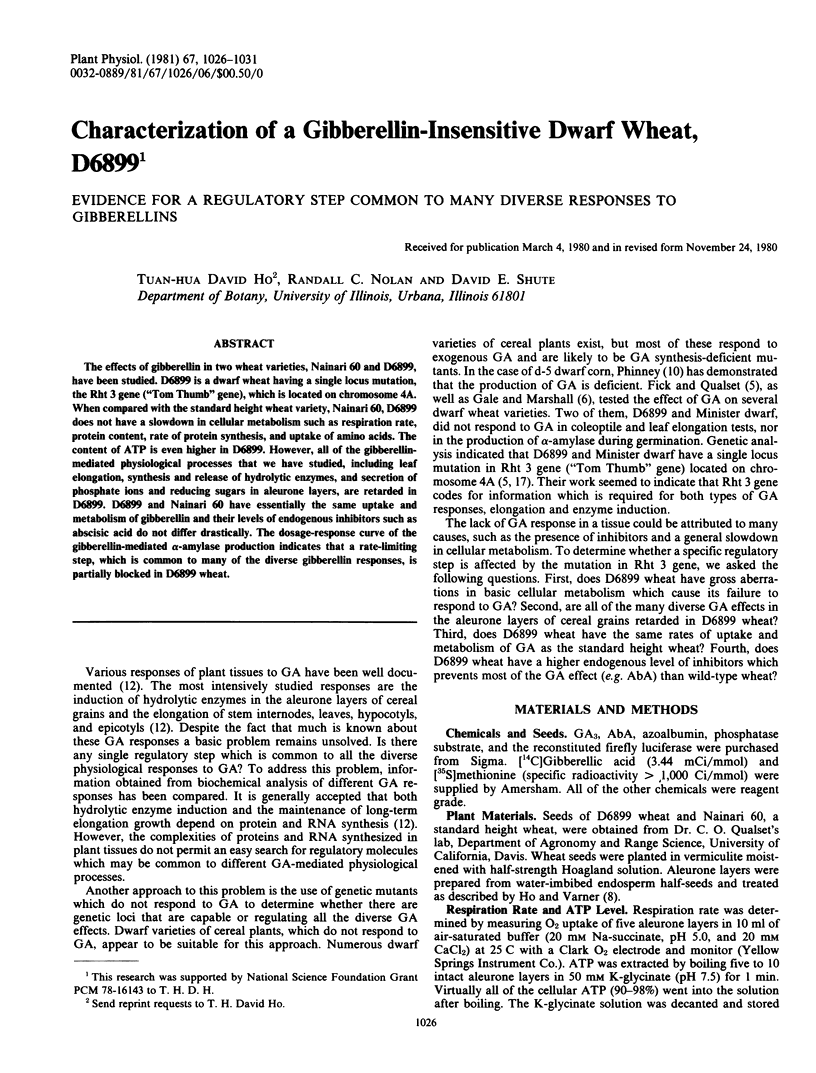
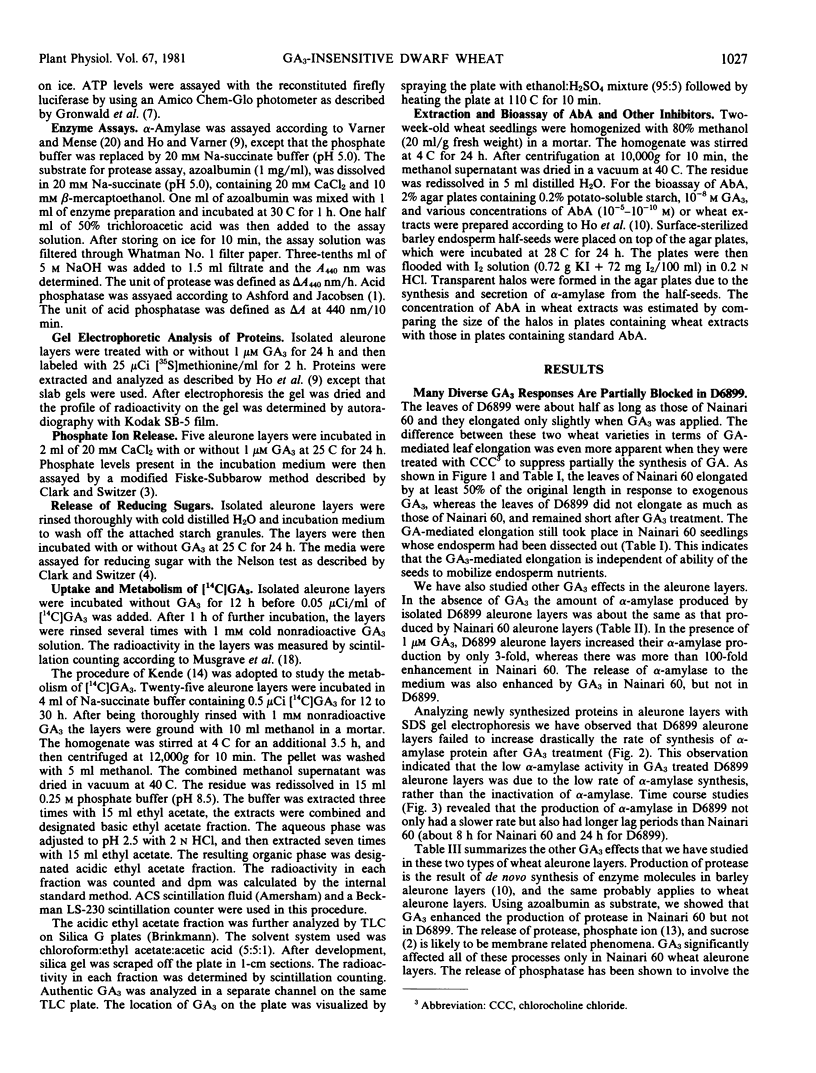
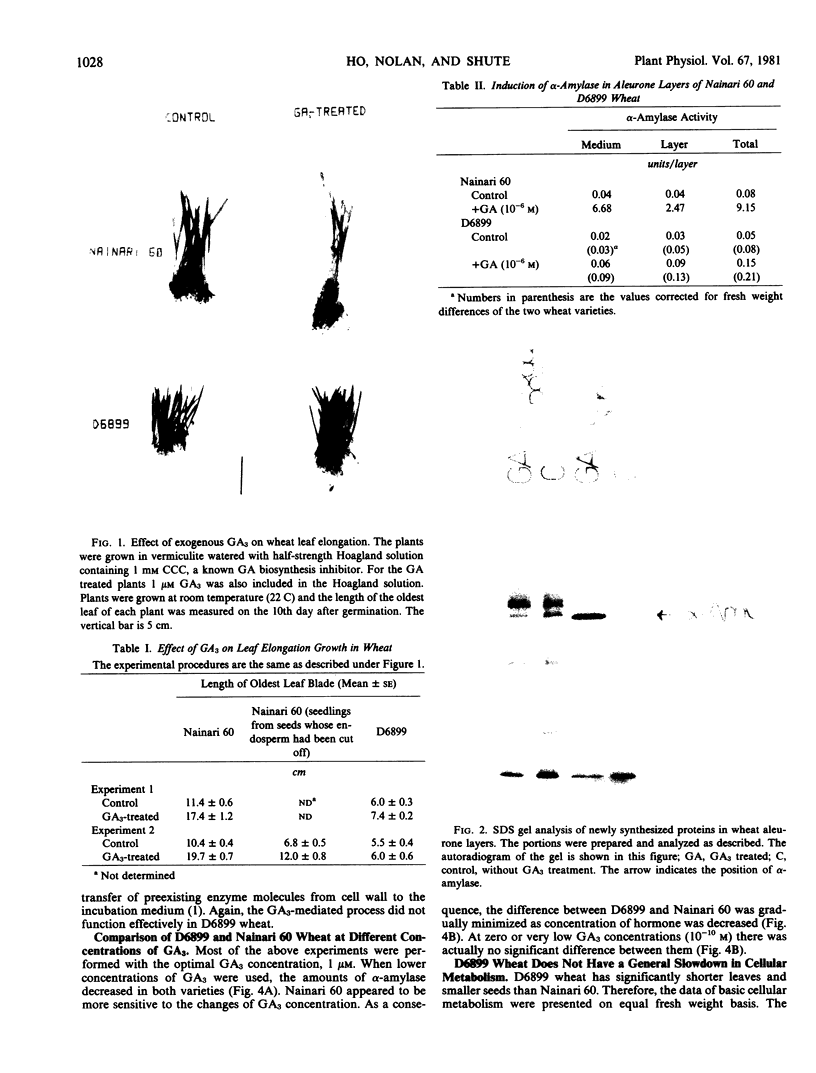
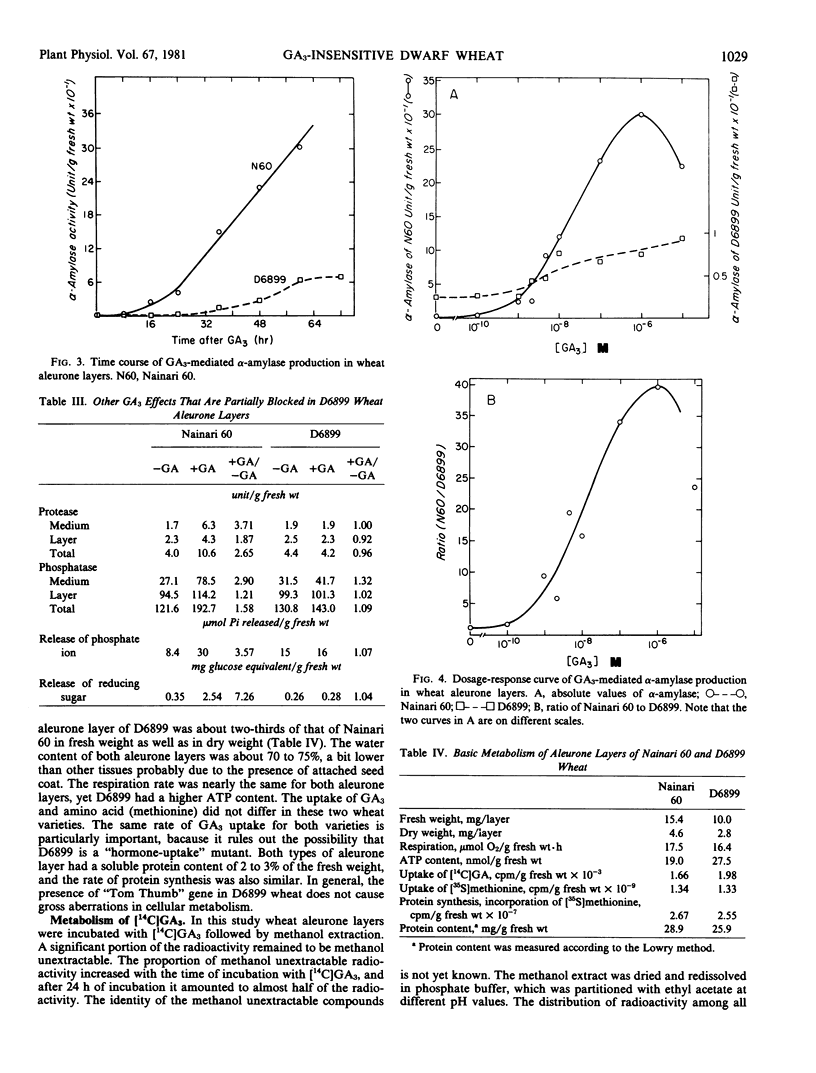
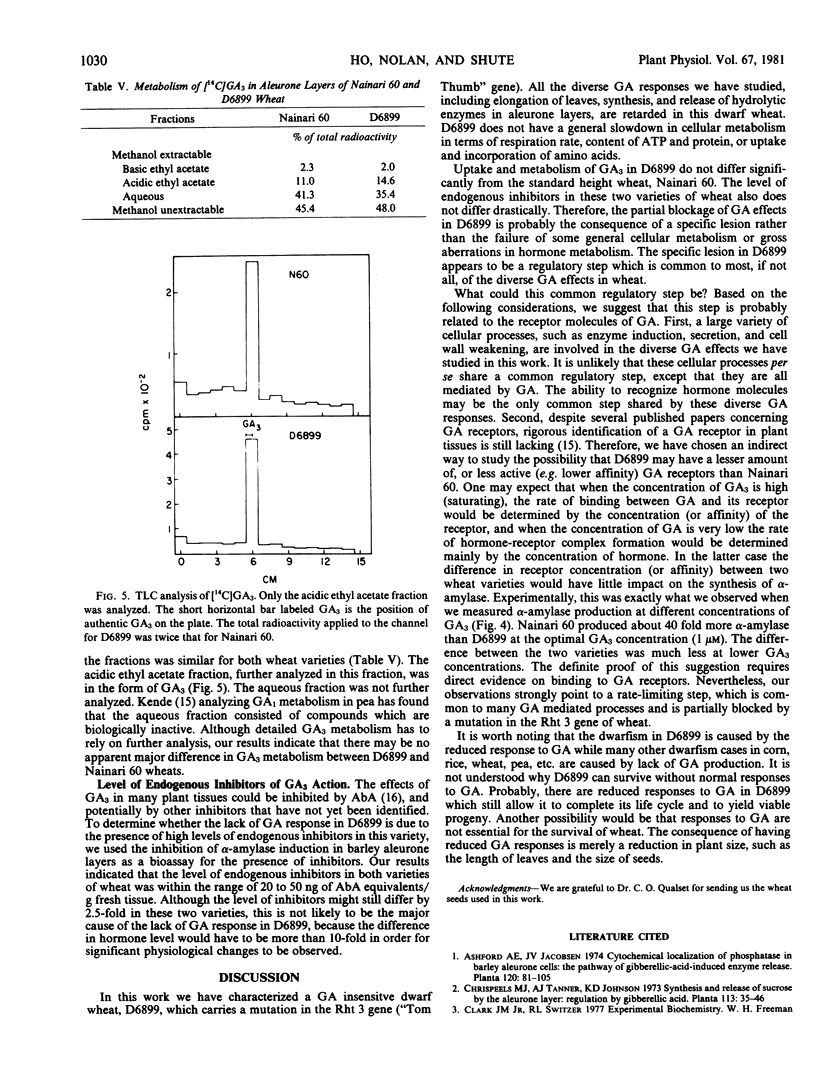
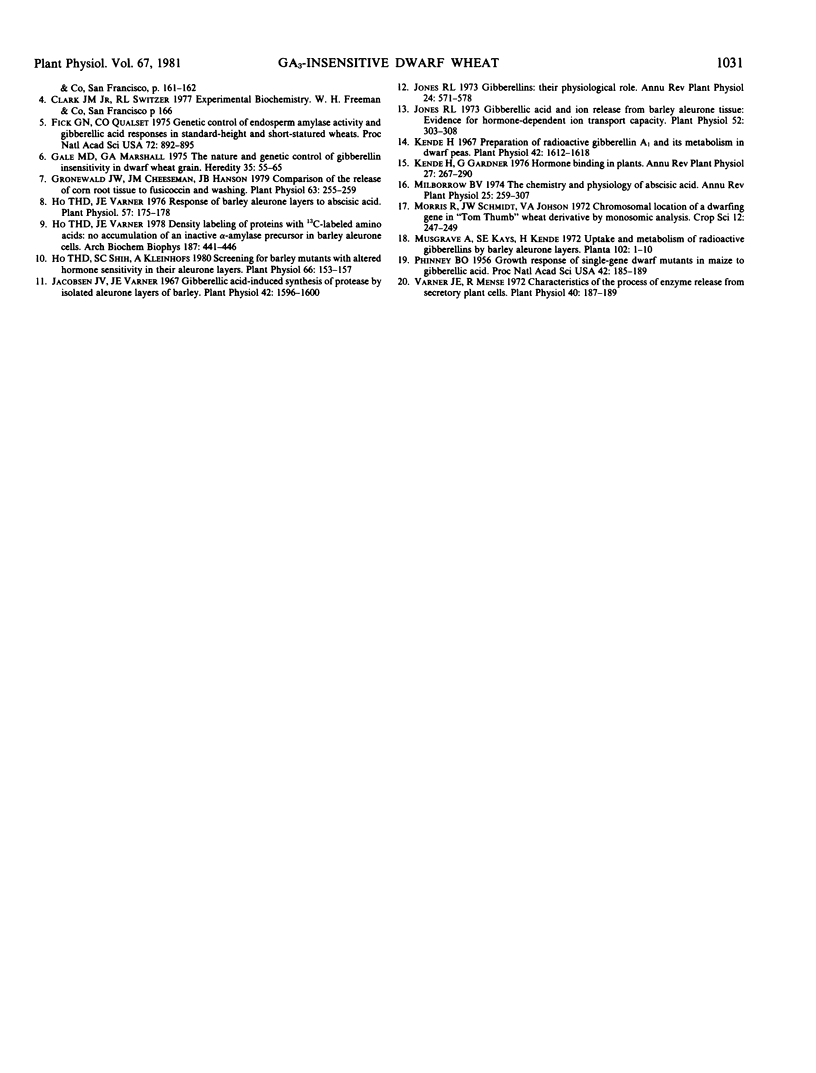
Images in this article
Selected References
These references are in PubMed. This may not be the complete list of references from this article.
- Fick G. N., Qualset C. O. Genetic control of endosperm amylase activity and gibberellic Acid responses in standard-height and short-statured wheats. Proc Natl Acad Sci U S A. 1975 Mar;72(3):892–895. doi: 10.1073/pnas.72.3.892. [DOI] [PMC free article] [PubMed] [Google Scholar]
- Gronewald J. W., Cheeseman J. M., Hanson J. B. Comparison of the responses of corn root tissue to fusicoccin and washing. Plant Physiol. 1979 Feb;63(2):255–259. doi: 10.1104/pp.63.2.255. [DOI] [PMC free article] [PubMed] [Google Scholar]
- Ho D. T. Response of barley aleurone layers to abscisic Acid. Plant Physiol. 1976 Feb;57(2):175–178. doi: 10.1104/pp.57.2.175. [DOI] [PMC free article] [PubMed] [Google Scholar]
- Ho T. D., Varner J. E. Density labeling of proteins with 13C-labeled amino acids: no accumulation of an inactive alpha-amylase precursor in barley aleurone cells. Arch Biochem Biophys. 1978 Apr 30;187(2):441–446. doi: 10.1016/0003-9861(78)90055-3. [DOI] [PubMed] [Google Scholar]
- Ho T. H., Shih S. C. Screening for barley mutants with altered hormone sensitivity in their aleurone layers. Plant Physiol. 1980 Jul;66(1):153–157. doi: 10.1104/pp.66.1.153. [DOI] [PMC free article] [PubMed] [Google Scholar]
- Jacobsen J. V., Varner J. E. Gibberellic Acid-induced synthesis of protease by isolated aleurone layers of barley. Plant Physiol. 1967 Nov;42(11):1596–1600. doi: 10.1104/pp.42.11.1596. [DOI] [PMC free article] [PubMed] [Google Scholar]
- Jones R. L. Gibberellic Acid and Ion Release from Barley Aleurone Tissue: Evidence for Hormone-dependent Ion Transport Capacity. Plant Physiol. 1973 Oct;52(4):303–308. doi: 10.1104/pp.52.4.303. [DOI] [PMC free article] [PubMed] [Google Scholar]
- Kende H. Preparation of radioactive gibberellin a(1) and its metabolism in dwarf peas. Plant Physiol. 1967 Nov;42(11):1612–1618. doi: 10.1104/pp.42.11.1612. [DOI] [PMC free article] [PubMed] [Google Scholar]
- Phinney B. O. GROWTH RESPONSE OF SINGLE-GENE DWARF MUTANTS IN MAIZE TO GIBBERELLIC ACID. Proc Natl Acad Sci U S A. 1956 Apr;42(4):185–189. doi: 10.1073/pnas.42.4.185. [DOI] [PMC free article] [PubMed] [Google Scholar]
- Varner J. E., Mense R. M. Characteristics of the process of enzyme release from secretory plant cells. Plant Physiol. 1972 Feb;49(2):187–189. doi: 10.1104/pp.49.2.187. [DOI] [PMC free article] [PubMed] [Google Scholar]



